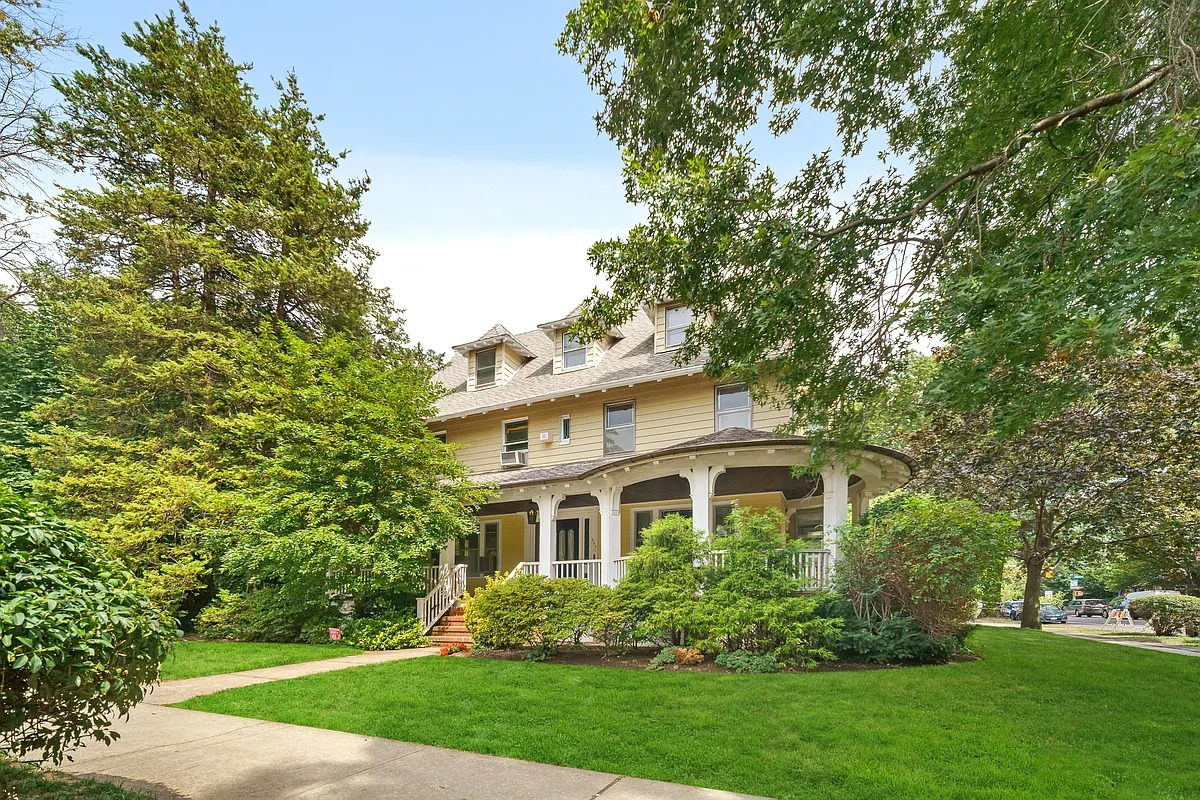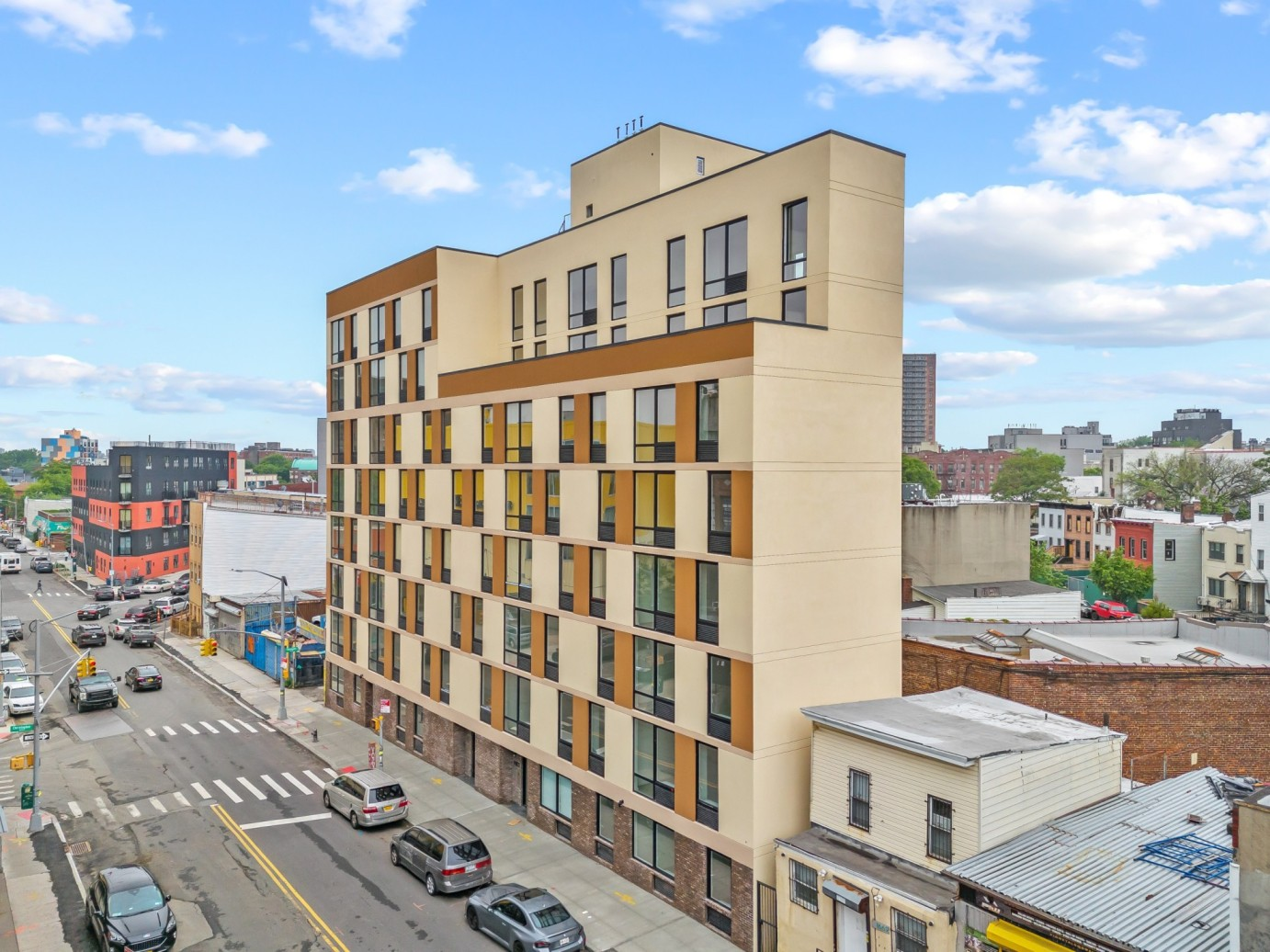Building of the Day: 208 Vanderbilt Avenue
Brooklyn, one building at a time. Name: Artists’ studios and offices Address: 208 Vanderbilt Avenue, between DeKalb and Willoughby Avenues Neighborhood: Clinton Hill Year Built: 2004-5 Architectural Style: Minimalist Architect: David Adjaye and David Hotson Other works by architects: Adjaye New Museum of Contemporary Art, NYC, Smithsonian Museum of African-American History and Culture (opens 2015)…


Brooklyn, one building at a time.
Name: Artists’ studios and offices
Address: 208 Vanderbilt Avenue, between DeKalb and Willoughby Avenues
Neighborhood: Clinton Hill
Year Built: 2004-5
Architectural Style: Minimalist
Architect: David Adjaye and David Hotson
Other works by architects: Adjaye New Museum of Contemporary Art, NYC, Smithsonian Museum of African-American History and Culture (opens 2015) Hotson Projects around Manhattan, a townhouse in Williamsburg, similar in shape to this house.
Landmarked: No.
The story: Vanderbilt Avenue has long been the service street to the mansions of Clinton Avenue, and over the last 100 years, carriage houses, stables and garages lined its streets, especially between Lafayette and Myrtle Avenues. This lot once held a nice little two story brick carriage house, as seen in the 1970’s-era tax photo. Things change in Brooklyn real estate in only 40 or so years, as the garage seen to the left of 208 is now a church parking lot, and the apartment building next door to the right, now is faced in brownstone stucco. In 2004, avant garde London architect David Adjaye, with local architect David Hotson, as architect of record, designed this building as studio and office space for two successful Clinton Hill artists. It makes quite a statement on the block, as the black cladding is not only on the façade, but also the side. The surface seems to literally absorb light, and is made of woven plastic panels. The architect, David Adjaye, was born in Tanzania to Ghanaian diplomatic parents. He was educated in London, and was the winner of several prestigious architectural design awards. He’s designed stores in London, museums in Europe and America, and the Nobel Peace Center in Oslo. He’s also worked with Brad Pitt to design houses for Katrina victims, and is considered one of the world’s starchitects. His work is all very minimalist and modern, with very spare, clean lines, using natural materials such as glass, concrete and wood in new and innovative ways. The inside of this building, as seen in the book Brooklyn Modern, by Diana Lind, is very light-filled, airy and spacious. His American partner in this project was David Hotson, a NoHo based architect with a very similar minimalist aesthetic. More photos of the interior and exterior of this house can be seen on the Hotson website. The result of their work is a building like no other in the area, and an interesting addition to the many styles that make up the architecture of Clinton Hill.







The parking lot adjacent to this building belongs to St. Joseph’s College. It is not church parking.
I always think of and refer to this as the “denim building” as it looks like it’s covered in that fabric.
Thanks for the info. I wonder about this place as I walk by it daily.
DA2 is a new character
Yes – the interior space is great. While the street and side facade are quiet and reserved, the whole back of the building is blown open, and interior spaces are light filled and interesting. A great example of how an urban townhouse doesn’t have to be anything at all like a brownstone if it doesn’t want to be.
That is Lorna Simpson and James Casabere’s studio. It was open on the Ft. Greene house tour a few years ago…really amazing space inside.
what Minard said.
It’s a beautiful contemporary building that fits in perfectly, I think..its balance and understated grace are in harmony with that of the older buildings.
David Adjaye is a big deal now.
We will be hearing a lot more about him in years to come.
I hear he is opening an office in NYC.
This building is amazing.
Amen DS.
Context is one of those words bandied about when all the utterer really means is “I don’t like it.”